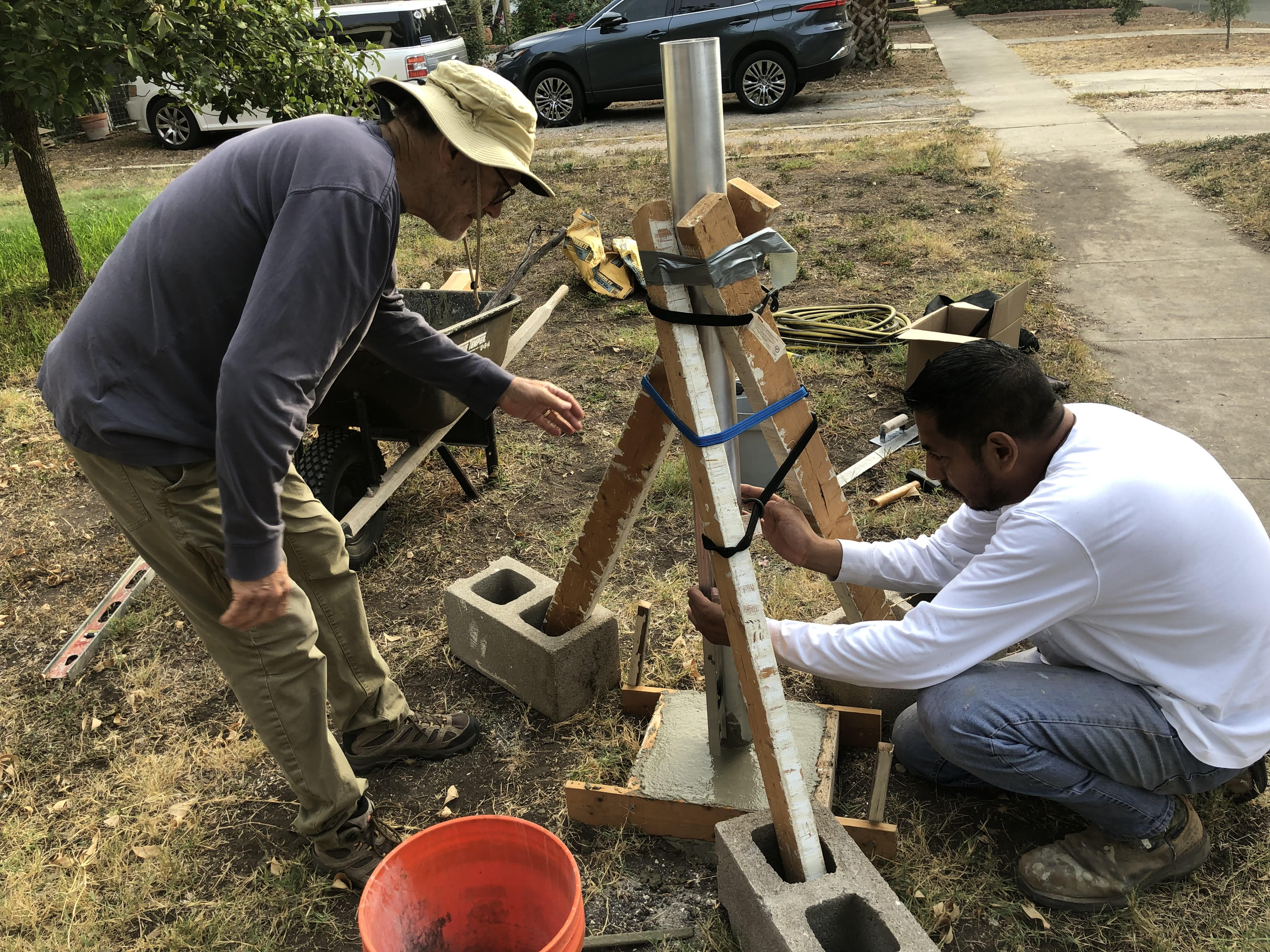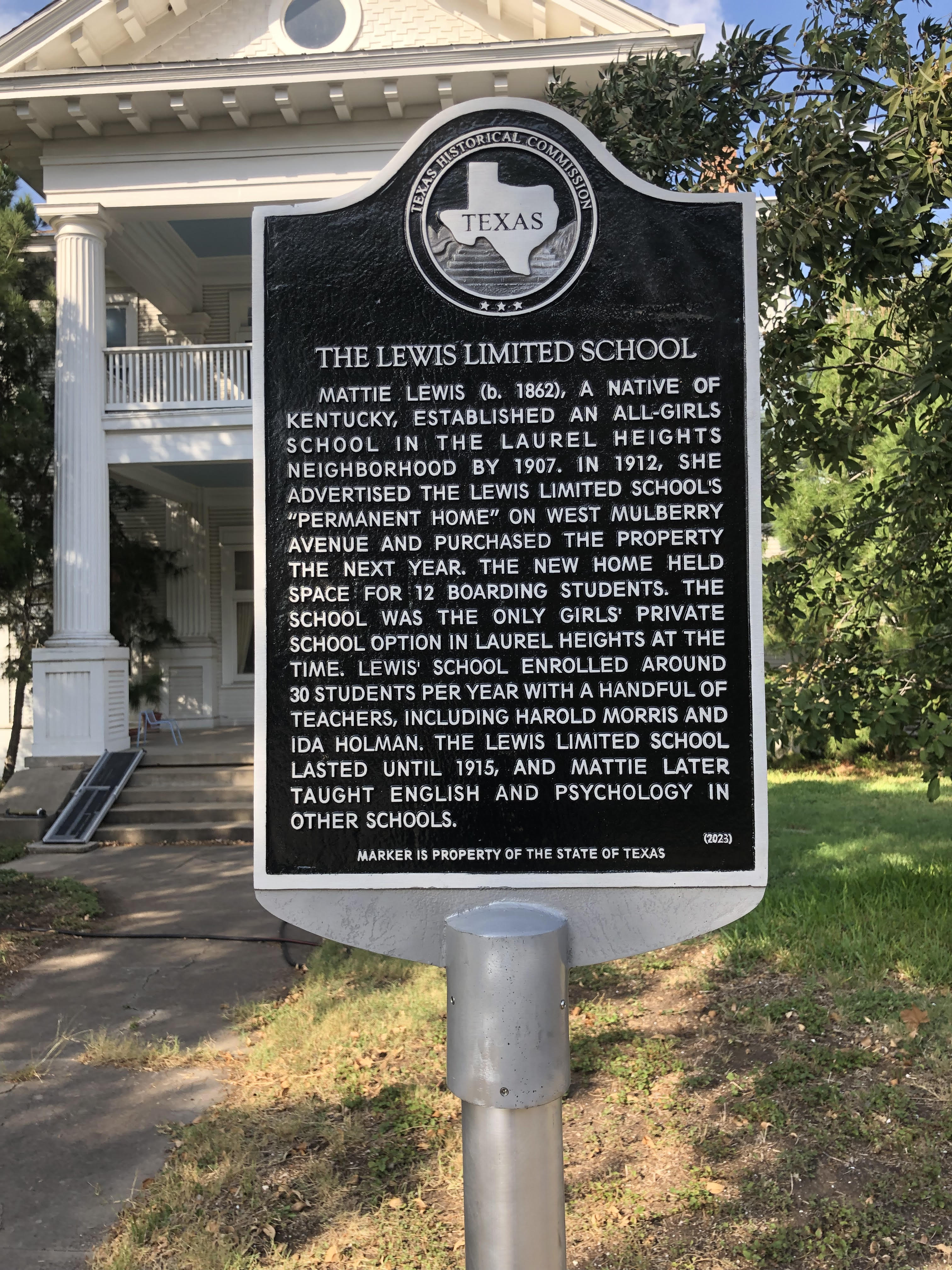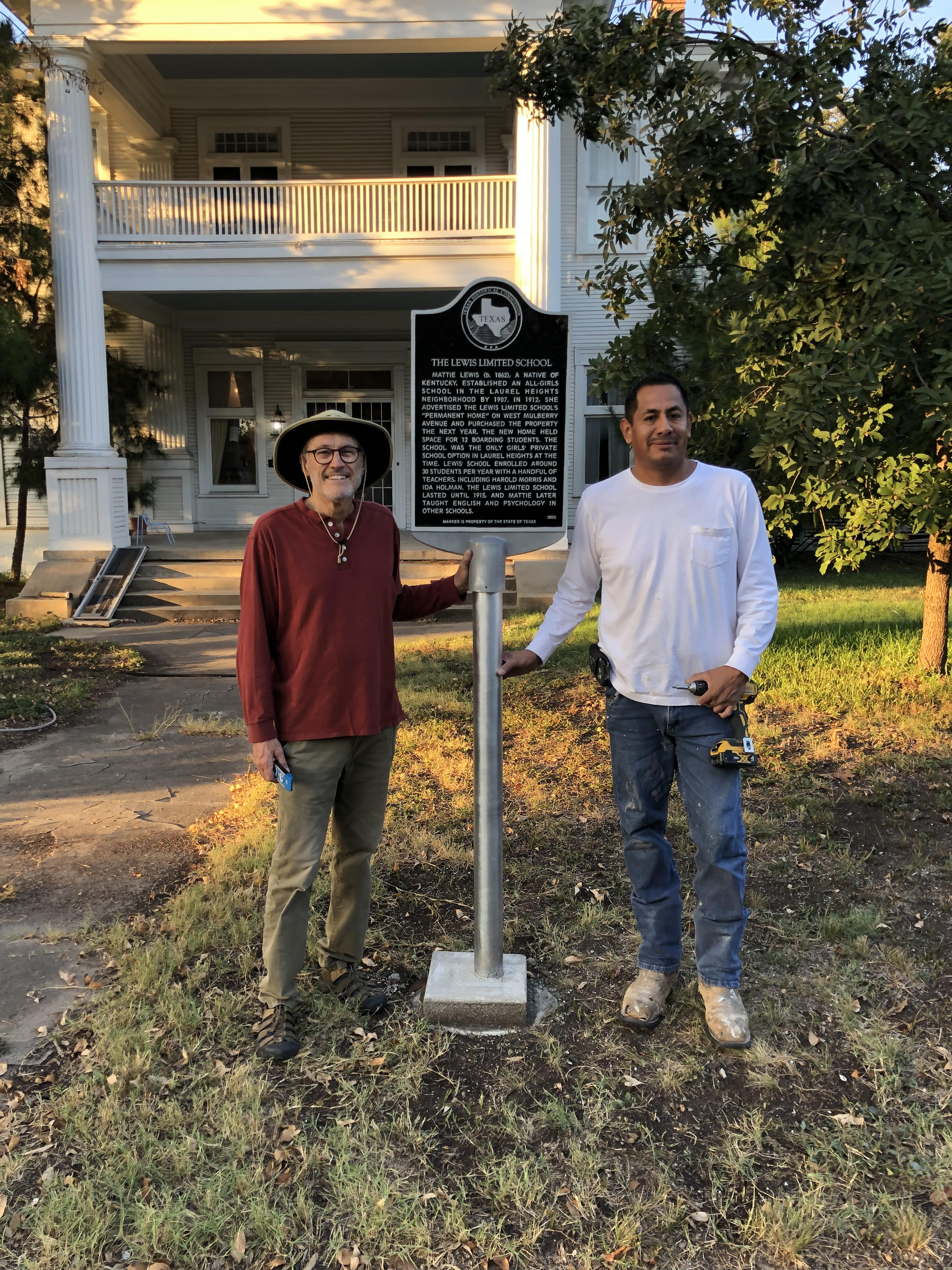TEXAS HISTORICAL MARKER FOR AN INSTITUTION |
THE LEWIS
LIMITED SCHOOL FOR GIRLS 1912-1915 |
Miss Mattie Lewis,
Principal |
Application and Submission
Introduction. The state of Texas supports informative historical markers of several types including markers for houses and for institutions. The house where my wife and I live was constructed in 1905, with a major addition to the back added at least several years before 1915. It is an interesting example of the Greek Revival style (as with the John_Wood_Mansion). But there was no recorded architect involved, and the house itself is not as majestic as many older houses in San Antonio. The house is mainly of historical interest because a girls school was housed in it. So it was obvious to apply for a marker for an institution. (Pictures and floor plans: House.) Texas brags online that there are "more than 16,000 official Texas Historical Markers spread across all 254 counties of Texas." Application. The process of application for a marker is carefully explained online. In outline, anyone desiring a marker must fill out detailed forms, supply a narrative giving justification for a marker, and pay a fee of $100. A committee at the county level (Bexar County in this case) may reject the application, recommend revisions of the narrative, or forward the application to a state-wide committee. Again a committee considers the proposal for a marker. Narrative. Here is the narrative I submitted. It includes links to extensive online materials, such as 130 newspaper articles and copies of other historical materials. Here is a version longer than the 10-page limit on application length. It includes names of all students and adults that could be found in newspaper reports and advertisements, samples of such reports and sample advertisements, two extra historic pictures of the house, and the interview with a summer-school student.Outcome and Finish
Outcome. I was delighted that the state committee accepted the application. Then I had to pay to have the marker cast, taking up to half a year and costing $1450. (While it sounds like a lot, this is the actual casting cost not including any fees. Very few places still cast bronze markers.) Next Steps. Now they could send it out to be cast. Then it must be installed. Installation. The marker is normally attached to a pole and not affixed to a building, (They don't want damage to a building caused by attaching a marker.) Though we paid for the marker, it remains the property of the State of Texas. Location. My wife and I decided to install it on our property, near the east-west sidewalk, so that people walking along the sidewalk can easily read it. (If installed next to our house, people could only read it by walking up to the house.) Security of the Marker. People steal bronze and sell it for the metal, getting perhaps $2 per pound. (Copper sells for 50% more.) The marker comes with a security feature, which I was later able to improve. I hope to make it even harder to steal. |
 |
||
Process
Details. The application process is lengthy and complex, starting in the spring. One could say arduous. Application forms and instructions are all online. One can pay someone to do much of the work, but it's hard to find anyone and can be expensive, without a guarantee of success. Local Help. As of the date below, there is a single local individual responsible for collecting and forwarding materials for Bexar County. He was exceptionally helpful to me:Joseph DeLeon, Archivist, Our Lady of the Lake Univ., Convent Room 112 (difficult to find!), work phone: 210-528-7042.


